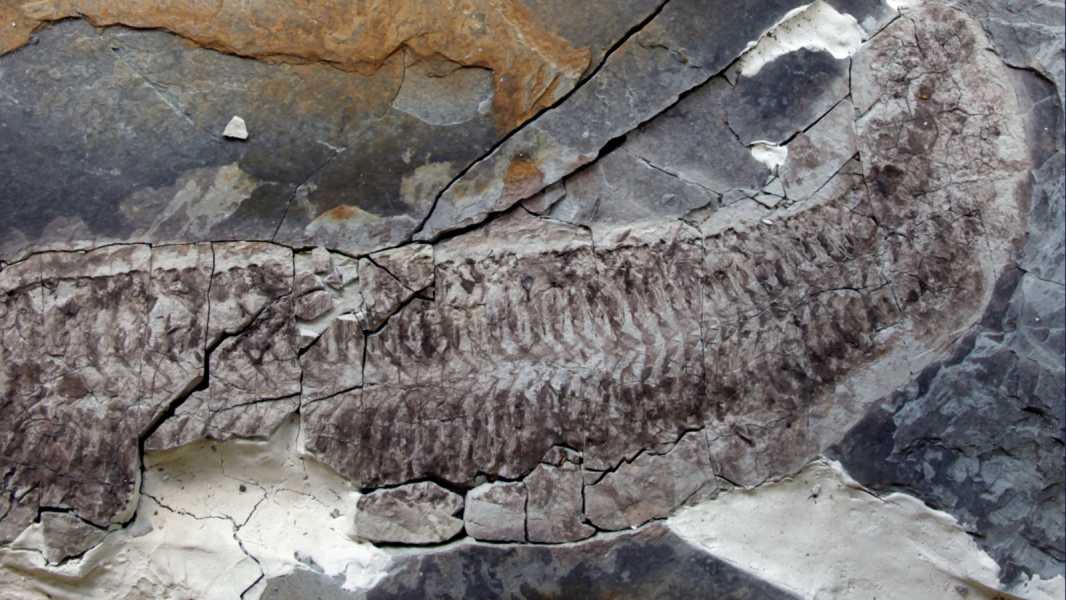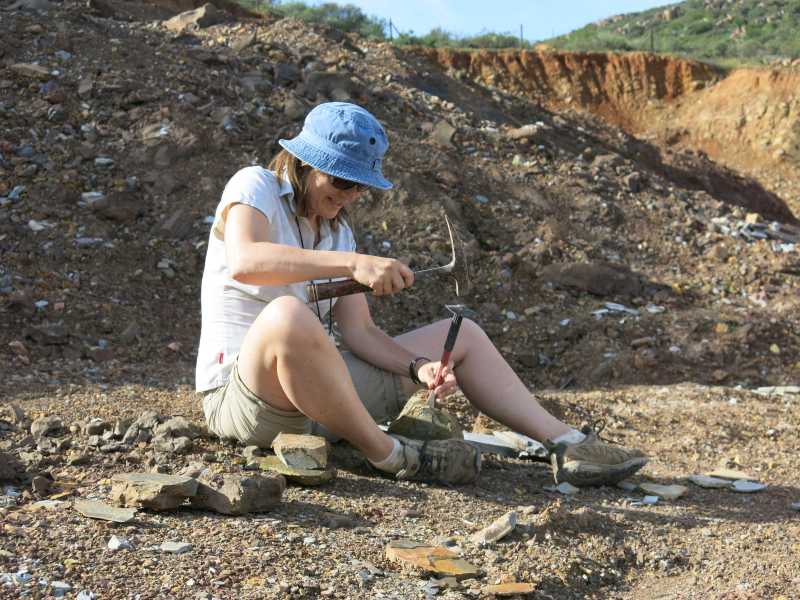
A 444-million-year-old Keurbos susanae fossil specimen found in South Africa. (Photo courtesy of Sarah Gabbott)
Researchers have discovered two 444-million-year-old fossil specimens that were “inside out” and contained well-preserved soft tissue, a new study has found. Unlike most fossils, the creature's muscles and internal organs were preserved in ancient sediments that became stone.
The fossil, found 250 miles (402 kilometers) north of Cape Town, South Africa, represents a new species of multi-segmented arthropod that may have lived in low-oxygen waters, according to a study published March 26 in the journal Papers in Palaeontology.
Scientists named the new species Keurbos susanae and nicknamed the fossil “Sue” after the mother of its discoverer.
“Sue is an inside-out, legless, headless creature,” said lead author Sarah Gabbott, a palaeontologist at the University of Leicester in the UK. “Remarkably, her internal organs are a mineralised time capsule: muscles, tendons and even intestines are preserved in incredible detail. Meanwhile, her hard shell, legs and head are missing – they were lost to decay more than 440 million years ago.”
The fossils were found in the Soom Shale, a site known for producing fossils with beautifully preserved soft tissue, more than 20 years ago. Scientists had hoped to find more specimens, but specimens of the species were rare. The silt, clay, and mud that Sue was preserved in were deposited on an ancient seafloor, beneath an ocean with low oxygen but high levels of dissolved hydrogen sulfide — suggesting that K. susanae may have adapted to low-oxygen conditions.

Paleontologist Sarah Gabbott uses a hammer to break up a specimen in the field.
Sue dates back to the Late Ordovician mass extinction (443 million years ago), when cold temperatures and ice ages wiped out nearly 85% of marine species.
Scientists are still working to figure out how the soft tissue in fossils like K. susanae is preserved in the Soom Shale. Clay minerals may have played a role, as may calcium phosphate, a compound commonly found in fossilized muscle. Meanwhile, the shells and exoskeletons of the species preserved in the Soom Shale likely dissolved in the acidic ocean.
Sourse: www.livescience.com





